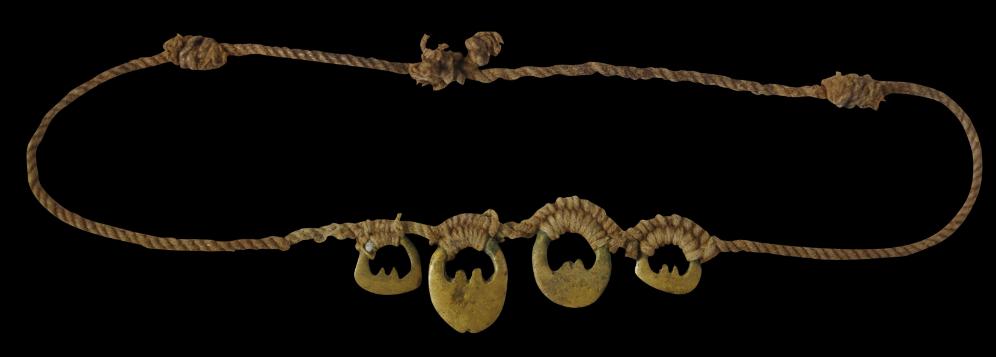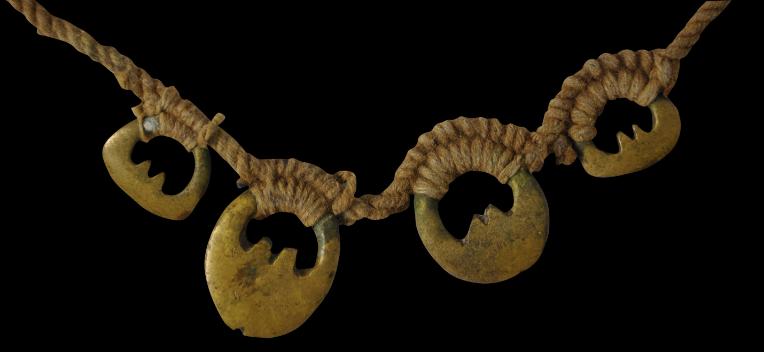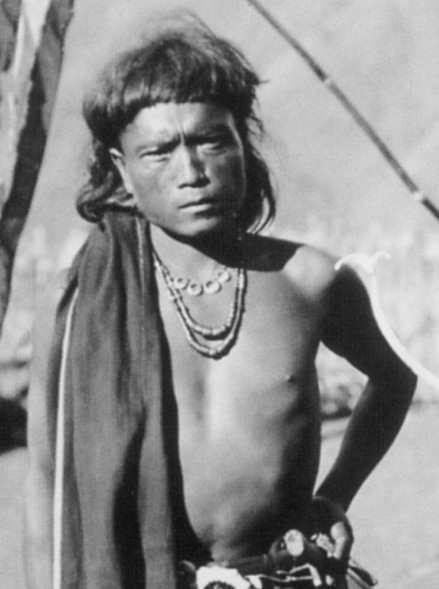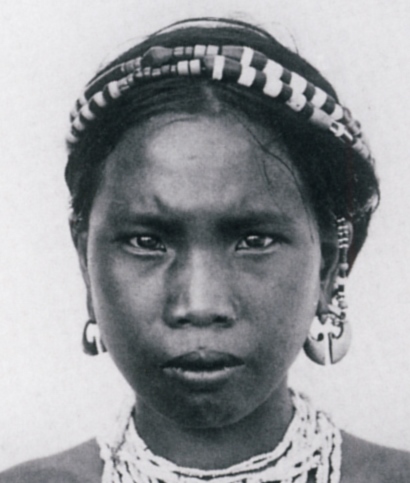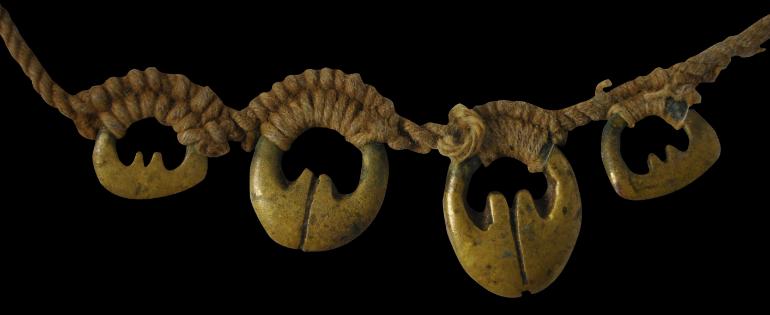
Brass Dinumug Linglingo Pendants, Bontoc or Kalinga People, Northern Luzon, Philippines, 19th-20th century
Necklace of Four Brass Dinumug Linglingo Pendants on Abaca (Banana Plant Fibre) Twine
Bontoc or Kalinga People, Northern Luzon, Philippines
19th-20th century
dimensions of largest linglingo: 2.4cm x 2cm, combined weight: 23g
This necklace of four brass linglingo pendants of graduated sizes is from the Bontoc or Kalinga peoples of northern Luzon island in the Philippines. The pendants are of cast brass using the lost wax method. The pendants here have been secured to a banana plant fibre twine. The necklace could have been worn by either a man or a woman. Sometimes, individual linglingo were worn as earrings. Linglingo is the generic Cordillera term for pendants and possibly earrings that have a basic closed ‘C’ form which appear to be based on the female reproductive organs (Afable et al, 2013, p. 292). The form is probably archaic and so such a reference might have been lost, with the form becoming more abstract. However, it is likely that such ornaments continued to have fertility or at least talismanic associations.
The evocative abstract form of the linglingo makes them small items of personal sculpture. The Musee du Quai Branly in Paris chose to have a linglingo as its cover illustration for the catalogue that accompanied its landmark exhibition on the Philippines in 2013.
The examples here have a fine patina and obvious age.
References
Afable, P., et al, Philippines: an Archipelago of Exchange, ACTES SUD/ Musee du Quai Branly, 2013.
Moltzau Anderson, E., In the Shape of Tradition: Indigenous Art of the Northern Philippines, C. Zwartenkot Art Books, 2010.
Richter, A., The Jewelry of Southeast Asia, Thames & Hudson, 2000.
Rodgers, S., Power and Gold: Jewelry from Indonesia, Malaysia and the Philippines, The Barbier-Mueller Museum, Geneva, 3rd ed. 1995.
Provenance
private European collection.
Inventory no.: 3883
SOLD

